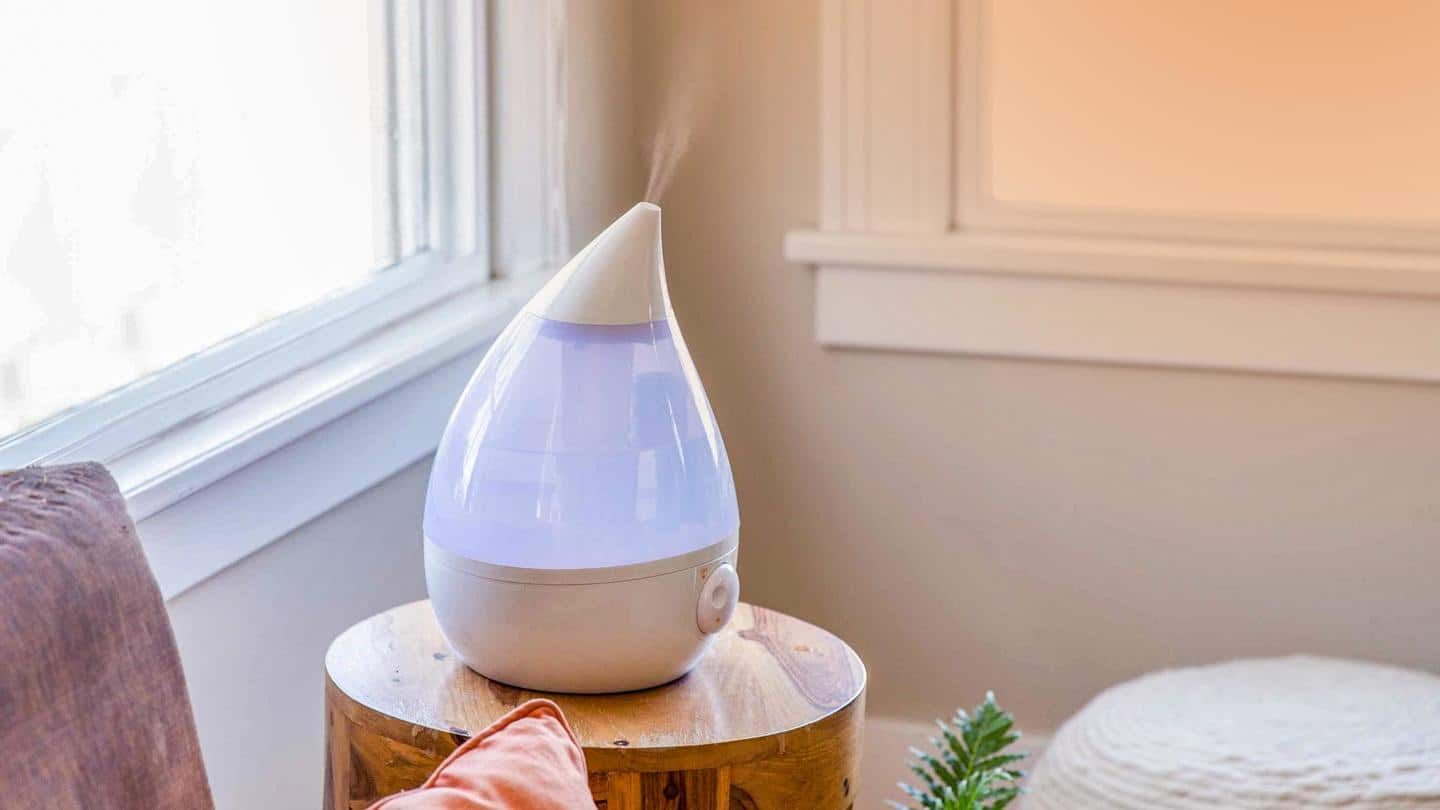
What is a humidifier and why is it useful
What's the story
A humidifier is a device that increases humidity in a room, or even a house depending on its build.
Medical ventilators also include humidifiers to comfort patients.
Low humidity is prevalent in hot and dry climates like in Delhi, or during winters when the humidity level drops to 10-20%. Homes should have a relative humidity of 30-50%.
Understand how humidifiers work before getting one.
Varieties
Types of humidifiers
Console humidifiers are large enough to add humidity to an entire building, but personal humidifiers are portable.
Steam vaporizers use electricity to create steam, which is cooled before exiting the device.
Ultrasonic humidifiers use vibrations to vaporize water.
Evaporators, on the other hand, produce humidity by gusting air past evaporating water.
Central humidifiers, connected to the central air conditioning serve the entire space.
Pros
Health benefits of using a humidifier
Humidifiers can prevent cases of dermatitis like atopic dermatitis, and seborrhoeic dermatitis, caused by low humidity.
They also help patients with seborrhoeic dermatitis from not experiencing redness, scaly skin lesions and hair loss.
They prevent the mucous membranes in the lining of the nose and throat from drying.
Humidifiers can also prevent dry eye syndrome, where one's eyes cannot produce enough tears.
Pros
Material benefits of using a humidifier
Apart from these benefits, a humidifier is a boon for your furniture, decor, or even flooring.
Low humidity can cause wooden furniture, wall decor, or flooring to shrink and loosen joints, or even develop cracks.
Materials made of paper like books, wallpaper, and artworks can also become brittle due to very low humidity.
Also, static electricity develops in dry areas and destroys semiconductor devices.
Cons
Risk of overuse
Despite several benefits, a dirty humidifier can become the breeding ground for bacteria and mold.
If used without cleaning, the germs venture will eventually enter your respiratory system.
Too much humidity can also condense in the walls and generate molds which can be harmful to your health.
Steam-based humidifiers can get really hot and can cause burns if not carefully handled.
Hygiene
How to clean a humidifier
Unplug the device and empty it, then rinse and dry the tank daily.
Once a week, use a vinegar solution to get rid of any mineral build-up and disinfect it.
Rinse the tank multiple times so no cleaning chemical is left behind and introduced into the air when you are using it.
Check the filters frequently, and change them according to the manufacturer's instructions.